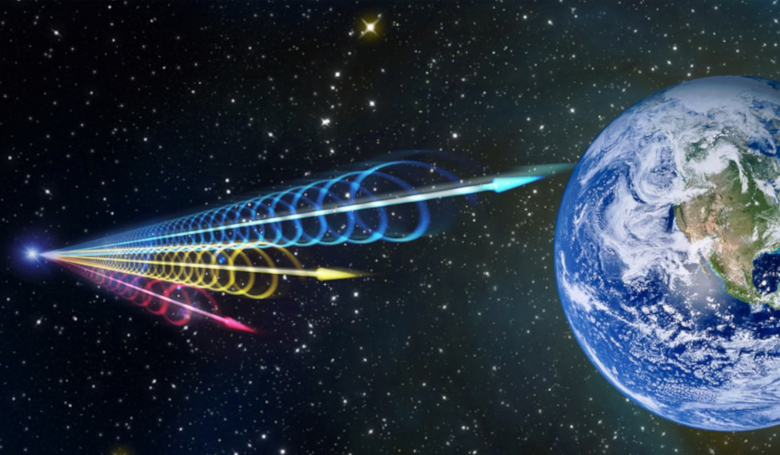In 2007, while looking through archival pulsar survey data, two astronomers spotted something very unusual; fleeting bursts of radio wave emission caused by some unexplained high-energy astrophysical process. Since then, the race has been on to discover exactly what they are.
Now thanks to a four-year observing campaign conducted at the Jodrell Bank Observatory, UK, scientists are now one step closer to uncovering where they come from.
Fast Radio Bursts or FRBs as they are known as, first came to the attention of astronomers thirteen years ago and were initially thought to be one-off events related to a cataclysmic event such as an exploding star.
With little else to go on, that idea remained largely unchanged, until November 2012, when one particular burst – FRB 121102 – was seen to repeat four years later.
To explain this behaviour, some scientists thought these bursts might have been generated when a highly magnetised neutron star called a magnetar, fired off pulses of radiation as it wobbled around on its magnetic axis; a phenomenon known as precession, which refers to a change in the direction of the axis of a rotating object.
Just as it looked like the problem was close to being solved, astronomers using the Lovell Telescope in Manchester, UK, now have a new piece of evidence to fit to the FRB puzzle.
Using the 32 bursts discovered during their four-year observing campaign, in conjunction with data from previously published observations, a team headed Dr Kaustubh Rajwade of The University of Manchester has discovered that emission from FRB 121102 is not random but follows a cyclic pattern.
Bursts from FRB 121102 were observed in a window lasting approximately 90 days followed by a silent period of 67 days. The same behaviour then repeats every 157 days.
"This is an exciting result as it is only the second system where we believe we see this modulation in burst activity,” says Rajwade.
To the team’s surprise, the timescale for this cycle is almost 10 times longer than the 16-day periodicity exhibited by the first repeating source, FRB 180916.J10158+56, which was recently discovered by the CHIME telescope in Canada.
Elation aside, the result now pours doubt on the origin of FRBs as the team believes it may be hard to explain a 157-day precession period given the large magnetic fields expected in these stars.
“Detecting a periodicity provides an important constraint on the origin of the bursts and the activity cycles could argue against a precessing neutron star,” Rajwade adds. Instead say the team, the presence of a regular sequence in the burst activity could imply that the powerful bursts are linked to the orbital motion of a massive star, a neutron star or a black hole.
So now what? Understanding one of the current great mysteries of astronomy generally means you are in it for the long-haul, especially if you are one of the first people to detect such a phenomena.
Lending a hand in this latest study was Duncan Lorimer, an Associate Dean for Research at West Virginia University, who was one half of the duo that originally found FRBs back in 2007.
“This exciting discovery highlights how little we know about the origin of FRBs," says Lorimer. Along with PhD student Devansh Agarwal, Lorimer developed the data analysis technique used to uncover the cyclic pattern.
Despite progress with this latest study, much is still left unknown and it will fall to the long-term reliant monitoring capabilities such as those provided by the Lovell Telescope to determine, amongst other things, if this coherent repeating feature is common or limited to a select few bursts.
“Advances such as these and further observations of a larger number of FRBs will be needed in order to obtain a clearer picture about these periodic sources and elucidate their origin” Lorimer concludes.
If you've enjoyed reading this article, please consider subscribing to ROOM Space Journal to gain immediate and full access to the latest magazine feature articles and receive your own print and/or digital copies of the quarterly ROOM magazine delivered electronically or direct to your door.











